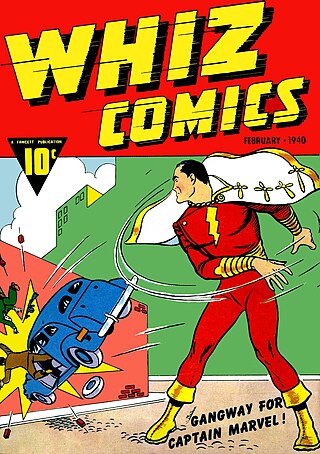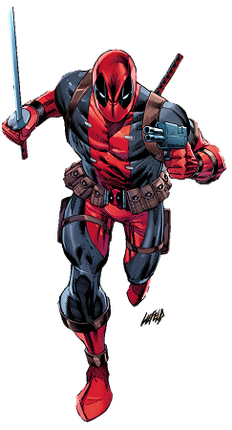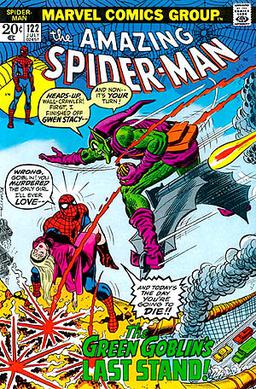Related Research Articles

Captain America is a superhero created by Joe Simon and Jack Kirby who appears in American comic books published by Marvel Comics. The character first appeared in Captain America Comics #1, published on December 20, 1940, by Timely Comics, a corporate predecessor to Marvel. Captain America's civilian identity is Steve Rogers, a frail man enhanced to the peak of human physical perfection by an experimental "super-soldier serum" after joining the United States Army to aid the country's efforts in World War II. Equipped with an American flag-inspired costume and a virtually indestructible shield, Captain America and his sidekick Bucky Barnes clashed frequently with the villainous Red Skull and other members of the Axis powers. In the final days of the war, an accident left Captain America frozen in a state of suspended animation until he was revived in modern times. He resumes his exploits as a costumed hero and becomes leader of the superhero team the Avengers, but frequently struggles as a "man out of time" to adjust to the new era.

A superhero or superheroine is a stock character who typically possesses superpowers or abilities beyond those of ordinary people, is frequently costumed concealing their identity, and fits the role of the hero; typically using their powers to help the world become a better place, or dedicating themselves to protecting the public and fighting crime. Superhero fiction is the genre of fiction that is centered on such characters, especially, since the 1930s, in American comic books, as well as in Japanese media.
The Silver Age of Comic Books was a period of artistic advancement and widespread commercial success in mainstream American comic books, predominantly those featuring the superhero archetype. Following the Golden Age of Comic Books, the Silver Age is considered to cover the period from 1956 to 1970, and was succeeded by the Bronze Age.

The Justice League, or Justice League of America (JLA), is a team of superheroes appearing in American comic books published by DC Comics. The team first appeared in The Brave and the Bold #28. The team was conceived by writer Gardner Fox as a revival of the Justice Society of America, a similar team from DC Comics from the 1940s which had been pulled out of print due to a decline in sales.

Deadpool is a character appearing in American comic books published by Marvel Comics. Created by Fabian Nicieza and Rob Liefeld, the character first appeared in New Mutants #98. In his comic book appearances, Deadpool is initially depicted as a supervillain of the New Mutants and X-Force, though later stories would portray him as an antihero. Deadpool is the alter ego of Wade Wilson, a disfigured Canadian mercenary with superhuman regenerative healing abilities. He is known for his tendency to joke incessantly and break the fourth wall for humorous effect.

Marvel UK was an imprint of Marvel Comics formed in 1972 to reprint US-produced stories for the British weekly comic market. Marvel UK later produced original material by British creators such as Alan Moore, John Wagner, Dave Gibbons, Steve Dillon, and Grant Morrison.

Miss America is a superhero appearing in American comic books published by Marvel Comics. Created by writer Otto Binder and artist Al Gabriele, the character first appeared in Marvel Mystery Comics #49 in the Golden Age of Comic Books. Madeline Joyce is the first incarnation of Miss America. The character has also been a member of the Invaders, Liberty Legion, and All-Winners Squad at various points in her history.

Jessica Campbell Jones-Cage, professionally known as Jessica Jones, is a superheroine appearing in American comic books published by Marvel Comics. The character was created by writer Brian Michael Bendis and artist Michael Gaydos and first appeared in Alias #1, as part of Marvel's Max, an imprint for more mature content, and was later retroactively established to have first appeared in The Amazing Spider-Man #4 in the Silver Age of Comic Books as an originally unnamed classmate of Peter Parker, created by writer-editor Stan Lee and artist Steve Ditko. Within the context of Marvel's shared universe, Jones is a former superhero who becomes the owner of Alias Private Investigations. Bendis envisioned the series as centered on Jessica Drew and only decided to create Jones once he realized that the main character he was writing had a distinct-enough voice and background to differentiate her from Drew, though deciding to still name the character after her on the basis of how "two [people] can have the same first name".

Dark Circle Comics is an imprint of Archie Comics Publications, Inc. Under its previous name, Red Circle Comics, it published non-humor characters, particularly superheroes in the 1970s and 1980s.

Fabian Nicieza is an Argentine-American comic book writer and editor who is best known for his work on Marvel titles such as X-Men, X-Force, New Warriors, Nomad, Cable, Deadpool and Thunderbolts, for all of which he helped create numerous characters, among them Deadpool, Domino, Shatterstar, and Silhouette.

The Bronze Age of Comic Books is an informal name for a period in the history of American superhero comic books, usually said to run from 1970 to 1985. It follows the Silver Age of Comic Books and is followed by the Modern Age of Comic Books.
Darick W. Robertson is an American artist best known for his work as a comic book illustrator on series he co-created, notably Transmetropolitan (1997–2002) and The Boys.
Kid Colt is the name of two fictional characters appearing in American comic books published by Marvel Comics. The first is a cowboy whose adventures have taken place in numerous western-themed comic book series published by Marvel. The second is a cowboy-themed horse-like superhero. The character's first appearance was in Kid Colt #1.

Marvel Super-Heroes is the name of several comic book series and specials published by Marvel Comics.

Texas Twister is a superhero appearing in American comic books published by Marvel Comics. The character was created by writer Roy Thomas and penciller George Pérez and first appeared in Fantastic Four #177. He was a S.H.I.E.L.D. Super-Agent and is a member of the Rangers, the American Southwest superhero team.
The portrayal of women inAmerican comic books has often been the subject of controversy since the medium's beginning. Critics have noted the roles of women as both supporting characters and lead characters are substantially more subjected to gender stereotypes, with femininity and/or sexual characteristics having a larger presence in their overall character.

Superhero fiction is a subgenre of speculative fiction examining the adventures, personalities and ethics of costumed crime fighters known as superheroes, who often possess superhuman powers and battle similarly powered criminals known as supervillains. The genre primarily falls between hard fantasy and soft science fiction in the spectrum of scientific realism. It is most commonly associated with American comic books, though it has expanded into other media through adaptations and original works.
Marvel Fireside Books were a series of full-color trade paperbacks featuring Marvel Comics stories and characters co-published by Marvel and the Simon & Schuster division Fireside Books from 1974 to 1979. The first book, 1974's Origins of Marvel Comics, was very successful, and inspired a series of annual sequels.

Jack Monroe is a fictional superhero appearing in American comic books published by Marvel Comics. The character was originally introduced as third sidekick under the Bucky identity, initially treated as the original Bucky Barnes before being retconned as a separate character, and later the most well-known incarnation of Nomad.
Super Pro or variant, may refer to:
References
- ↑ Morris, Jon (2015). The League of Regrettable Superheroes: Half Baked Heroes from Comic Book History. Philadelphia, Pennsylvania: Quirk Books. pp. 224–225. ISBN 978-1-59474-763-2.
- ↑ "NFL SuperPro". atomicavenue.com. Retrieved 25 August 2013.
- 1 2 Twenty-Five Years Ago, the NFL and Marvel Created 'NFL SuperPro'—and It Sucked, by Alex Wong, at Vice; published September 21, 2016; retrieved May 11, 2017
- ↑ Happy Thanksgiving From NFL Superpro, the Football Superhero, by Chris Sims, at ComicsAlliance; published November 25, 2009; retrieved May 11, 2017
- ↑ 10 ridiculous superheroes who are their jobs, by Cyriaque Lamar, at Io9; published November 16, 2010; retrieved May 11, 2017
- 1 2 Comic Book Urban Legends Revealed #89, by Brian Cronin, at Comic Book Resources; published February 8, 2007; retrieved May 11, 20127
- ↑ The Top 10 Sports/Comic Book Crossovers, at Chicago Sports Review (via archive.org); published February 3, 2005; retrieved May 11, 2017